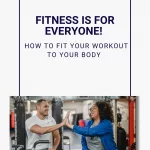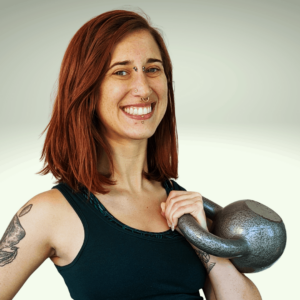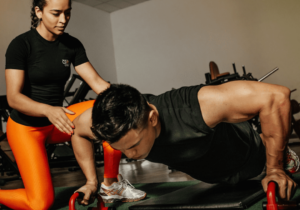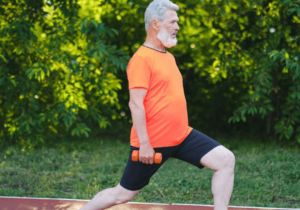Fitness is for Everyone: How to Fit Your Workout to YOUR Body

Photo by Julia Larson from Pexels
Accessible Fitness Part 1
Imagine two workout scenarios:
1. You just bought an online workout program because you’re ready to work on your fitness, but when you look at the exercises, they’re more advanced than you expected.
2. You’re brand new to working out and have read tons of articles saying things like “you MUST do exercises x, y, and z,” but you have no idea what that looks like for you or how to begin.
If one of these scenarios is you, what do you do???
You can MODIFY!
Just because a program or someone on the internet tells you to do something, it doesn’t mean you have to do exactly that!
Fitness is for everyone. Adjusting the exercise to fit your body leads to more enjoyable workouts. You have permission to make your workout work for your body, and no one’s body is the same.
Unless you’re working with a personal trainer, a workout or program is made for a general group of people, which means it can’t possibly fit perfectly for everyone who tries it.
YOU are the expert on your body, and you can choose how to make workouts accessible to you.
In this series, I will walk you through how to adjust a program or workout to make it fit your body.
Sore vs. Painful
Before we get into the specific tactics of altering exercises, often called modifications, I’ll start with the one that seems obvious but gets ignored by many people: If an exercise causes you pain, stop doing it!
“No pain, no gain” is a mantra of the past. If an exercise hurts you, skip it. Your health and happiness are not worth hurting yourself for one exercise (I guarantee there are other ways to work the same muscle).
A note on muscle soreness vs. pain:
Two general types of discomfort can come from your workouts.
One is a dull soreness, and the other is a sharper pain. First, muscle soreness (also known as DOMS, or delayed onset muscle soreness) comes from your muscles working more than they’re used to or in a different way than they’re used to. You’ll feel it any time from a few hours after your workout to a couple of days afterward, as the muscles repair themselves. While you don’t want to be very sore after your workouts, DOMS is typically not a bad thing.
If you feel an acute (sharp or sudden) pain while you’re working out, that’s a sign to stop the exercise. You will most likely feel this around one of your joints, such as your knee, shoulder, or hip. Continuing to do an exercise in a way that hurts your body can cause harm long term.
If you’re a chronic pain warrior, you will need to listen to your body (you are the expert, after all). Using some tactics below, you can choose how to modify an exercise to work best for you. Avoiding certain exercises is okay, and you might find it helpful to consult a personal trainer to talk about specific exercises.

Tactic 1: Change # of Reps
Reps are how many of an exercise you do per set. If a workout tells you to do 10 reps of a movement, I promise the world will not end if you only do 6 or 7. Consistency in doing the exercise over time is so much more important than doing more at any one time.
A great marker to go by: if you notice after several reps that you can’t do the exercise with the same quality you started with, it’s a good idea to stop earlier.
Tactic 2: Change # of Sets
A set or round is one or more exercises where you perform reps before resting. You don’t want to cut out too many sets, but if you’re overworked by the end of a workout, try dropping one or two sets and see if it changes how you feel.
Tactic 3: Change the Weight
If your workout has predetermined weights, they’re not set in stone! The more weight, the lower the reps and vice versa, so these two go hand in hand. You always have a choice in weight, even if you just used a different weight for the same exercise last week. When deciding what weight would be best for an exercise, try this progression:
- Bodyweight - doing the exercise with no additional weight
- Lighter weight - I can’t give you a number because it varies greatly depending on your workout experience. Start with an object like a soup can and try progressively heavier objects or weights until you find one you’re comfortable with.
- Medium to heavy weight - As you get more confident with an exercise and your muscles get stronger, you can try increasing the weight every few weeks.
If you’re doing a bodyweight exercise and want to modify it, try one of the other tactics!
Tactic 4: Less Range of Motion
Range of motion is how much your joints can move. For example, people who can do the splits have a bigger range of motion in their hips.
Going through a full range of motion during an exercise is best for getting stronger muscles, but “full” looks different for everyone! Your body may or may not be able to increase range of motion over time, but don’t let that stop you from doing those exercises.
Examples of this are doing a partial squat or a partial push-up.
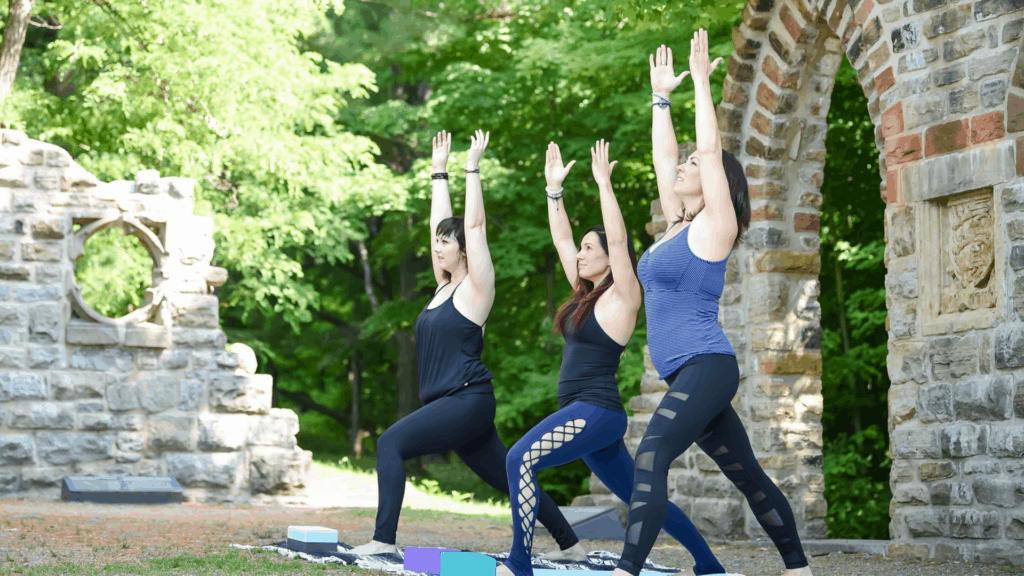
Photo by Annemarie Grudën on Unsplash
Fitness is for Everyone
This might be a hot take, but a good deal of fitness “rules” don’t apply to everyday life unless you want to get serious about training or competing.
Don’t let all these rules scare you into stopping your workouts. I’m not talking about rules that keep you safe (those are important!), I’m talking about the “it’s not a real push up if…” or “this doesn’t count unless you…” junk that people like to say to be fitness gatekeepers. You know your body and your goals, and fitness is for everyone!
Cultivating a long-term habit of fitness can be a difficult task, but learning how to modify exercises and honor your body is one way of making your workouts more enjoyable and sustainable.
Sarah Siertle, a strength and movement coach, specializes in introducing people to strength training and works to make the fitness world a more inclusive place. She has been a movement instructor since 2012 and also teaches swing dance around the US. Find other articles written by Sarah on her coach profile. Let Sarah help you get STRONG so you can take advantage of life’s adventures!
Related Articles
Additional articles in this series discuss specific exercises and, in addition to the tactics above, how to make them more accessible for your body.

